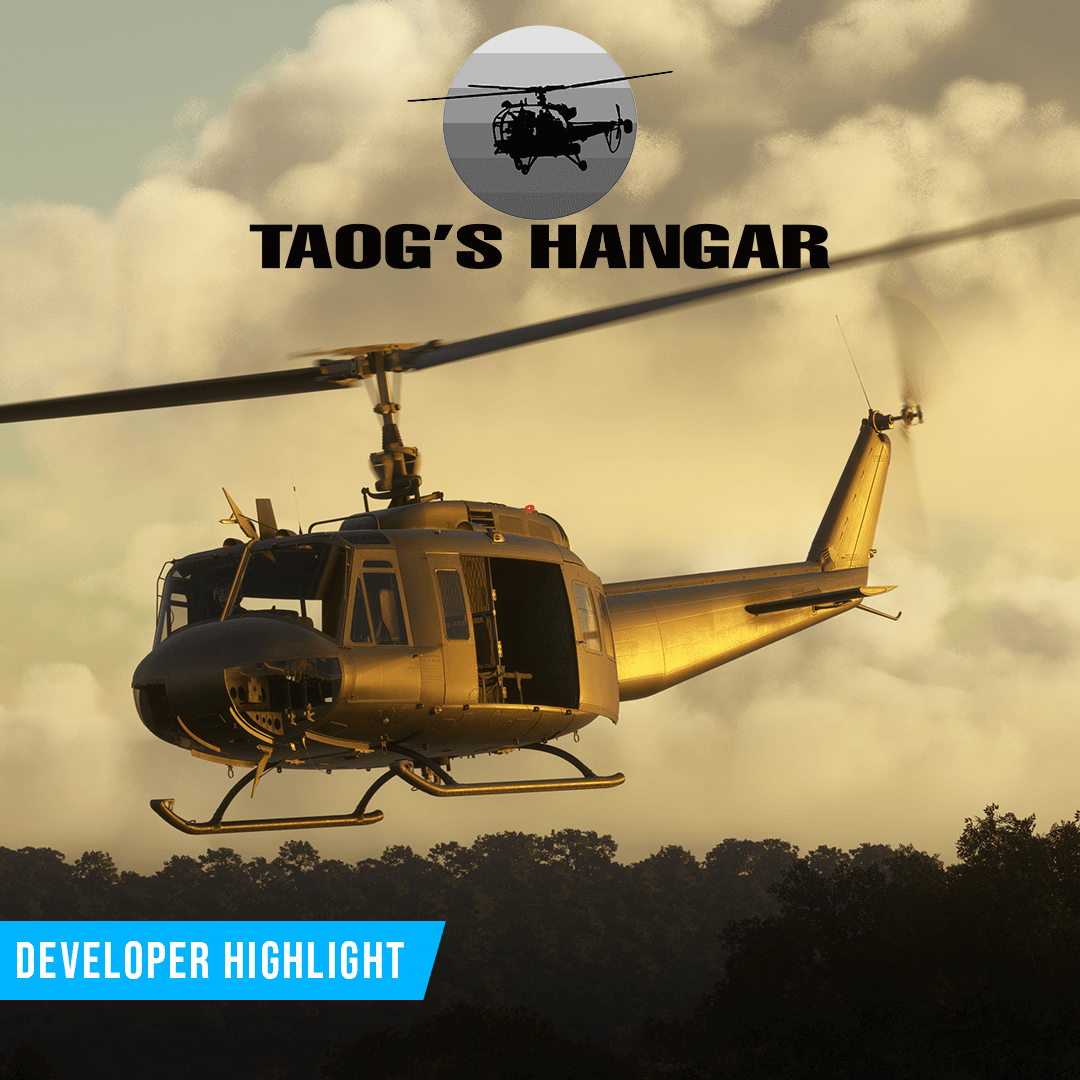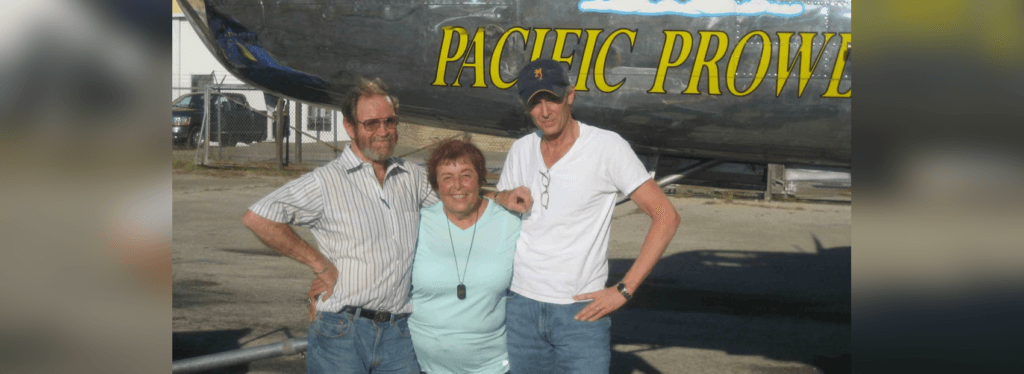Since the first Microsoft Flight Simulator was launched in 1982, many, many different programmers, designers, artists, testers, aviation experts and more have contributed their time and talent to making Microsoft Flight Simulator the franchise it is today.
As Women’s History Month comes to a close, we are shining a light on an individual who has many years both real-world flight history and Microsoft Flight Simulator history behind her: pilot and former Microsoft Flight Simulator Subject Matter Expert, Beth Oliver.
In 1998, Beth worked as a Research Consultant for Microsoft Combat Flight Simulator. Since then, she has also worked as a Quality Assurance tester for several other titles, including Microsoft Flight Simulator 98, Microsoft Flight Simulator 2000, and Microsoft Flight Simulator 2002. Beth’s journey to the Microsoft Flight team (at the time known as the Simulations Production Unit) is an inspiring one that began in her early childhood.
Born in New York City in 1936, Beth grew up all over the United States due to her parents’ separation early in her life. She estimates to have lived in about 22 different states, bouncing around schools and houses throughout her childhood. This, alongside the growing concerns of World War II, led to her initial love of aviation as a form of escapism; it was a way for her to get away from her troubles.
When Beth first began her aviation journey, it was a different time for women in the industry. Like so many other women, Amelia Earhart played no small part in inspiring her journey. Growing up with Amelia’s influence on aviation, being a pilot felt like it was something attainable, something that Beth could actually do one day.
The first step as an eight-year-old? Get in the bathtub and pretend it was an airplane.
The novelty wore off very quickly, but it was enough to spark a realization: she wanted to fly, and when she was 15 she would finally get the opportunity to pursue that. She did not wait for said opportunity to come to her, though – Beth sought it out and went to great lengths to seize it. She took two jobs working to pay for flying lessons: one job cleaning in a beauty parlor, and the other one selling candy in a movie theatre.
From these jobs (and a little help through the good graces of her instructor) she earned enough money to take flying lessons, though one final issue remained: transportation. Beth wouldn’t let that stop her.
She decided to take the bus part of the way, and then hitchhike the rest to the airport. It was a long journey for a 15-year-old girl, but whether it was confidence or naivety, Beth didn’t worry about it. As long as someone stopped, she was sure she would make it to the airport. This was in part due to a little advantage she took with her: a pack of cigarettes. This was in the early 40’s during the Second World War, and cigarettes were in short supply. Trading them for a ride proved to be a tactic that worked well.
Beth continued her lessons like this in secret. The only people Beth told were her friends at school. They were quite impressed – equally as much for trying as they were with her getting to the airport.
There are two moments during her lessons that she remembers well. The first:
“You had to wear a parachute. My instructor definitely was a good guy, but I was having trouble dragging the parachute out to the airplane, and he said, ‘Well I guess if you’re not going to make it out there, you won’t be able to solo.”’
This was the kind of treatment you could expect. People didn’t get really nasty, but you would be taken to the end of your rope.
Well, I managed to get it there and somehow managed to get it on, and so that was a big thing.”
And the second was a feeling when she took off for the first time by herself:
I took off and I felt… I just entered another world. I felt really like I was on my own. I could do anything. It made a huge difference to me in so many ways, and I’m just really glad.
From then onwards, there was no question: aviation and flying were what she wanted to do for the rest of her life. But at that time, she didn’t think that she would have a chance to make it a career. She remembers her father once saying to her, “You’ll be lucky if you get a job as a secretary.”
That stuck with her for a long time.
What happened next to Beth is the same thing that happens to many people: she graduated, and life showed up. She got married, had kids, and eventually she and her family settled down in Alabama. Unfortunately, at this point her dreams of flying flickered. While she and her husband were not struggling, they did not have the money or time to dedicate to her flying.
Everything changed when her grandmother passed away. For every end there is also a beginning, and for Beth it was a turning point in her life. Her grandmother had left her $10,000, and with that money she went out and bought herself an airplane – a Piper Tri-Pacer.
Beth’s children were delighted and impressed by their mother buying a plane. They would tell their friends how their mom took flying lessons, and it really impressed them after Beth earned her flight instructor rating and even gave lessons to some of the other parents.
In time, she began to travel and speak at schools about aviation and aerospace, letting the students know that there was a place for women in those fields. During these, she would sometimes dress as Mary Poppins to really make an impression on the students.
Beth’s involvement with Flight Simulator began when her husband Barry (who was taught to fly by Beth herself) was hired as a developer for the Simulations Production Unit for Flight Simulator in the late 90’s.
“My husband mentioned they were looking for someone that had flying experience – was a pilot or had been a pilot. Later on, he said, ‘Michelle asked, why don’t I have you come in?’
And I said, ‘I can fly an airplane, but I know as much about a computer as the dog does and I have trouble with the typewriter!’ and that was the end of it.
But he would say something every so often and he said, ‘Why don’t you just go talk to her?’ and I thought okay. I’ll just go talk to her.
And then what was just a chat ended up with my coming to work part-time.”
As a research consultant, the role Beth had was supplying guidance on various aspects of flying, as well as helping the development team understand some of the problems that, unless you were a pilot yourself, wouldn’t have to take into consideration.
Nowadays, Beth looks back on her time with the Microsoft Flight Simulator team with warmth and fondness. She had been hesitant to take on the position; she was older than many of her coworkers, and as she had professed, knew nothing about computers, but this made it a unique learning experience for her. When her husband unfortunately passed away in the early 2000’s during the development of Flight Simulator 2002, she keenly remembers the support and kindness they had shown her.
“I think that’s the best group of people I have ever worked with, and I really mean that.”
Beth has lived a long and interesting life, following her dreams with intelligence, passion, patience, and according to her, “perhaps just a hint of luck”. Throughout her life, she has done many things, and it can be difficult to summarize an entire lifetime of accomplishments and adventures. Here are some of the most notable and interesting highlights of her history:
- She was the first full-time female aviation faculty member at Ohio University in Athens, Ohio, where she taught ground, air, and Air Force ROTC.
- She participated multiple times in various Air Derbies, including in the All-Woman Transcontinental Air Race (also known as the Powder Puff Derby) and its successor, the Air Race Classic. Her first race was in 1966.
- She is a life member of the international women’s aviation organization, the Ninety-Nines.
- Received a Wright Brothers Master Pilot Award in 2011, commemorating 50 years of dedicated safe flying and service.
- Worked as Airport Manager in Louisville, Mississippi, teaching flying and flying charter flights.
- Served in the Peace Corps in Botswana as a rural industrial officer, where she worked with the San people. In 2013, she released a book titled “The Fly Machine” that draws inspiration from this time in her life.
- Sold Beechcraft aircraft at Boeing Field in Seattle, Washington.
- Worked as a volunteer with the world’s leading orangutan expert Biruté Galdikas, which involved a little flying, and working with the apes personally.
- Volunteered at the Seattle Zoo, where she demoed snakes.
- In more recent years, she had been involved with Conflict Resolution, which involved some flying, held risk, and even a luncheon with Nelson Mandela.
These days, Beth is doing well. She still gets job offers (which makes her laugh) and still occasionally works with school students. Later this year, she looks forward to being a great grandmother.
It’s interesting to look back and see the things that stick with us. At her high school graduation class’s 50th reunion, she had three separate people ask her if she had continued to fly. She had not seen them at all since high school, but they still remembered her drive and dedication. Following your dreams isn’t always easy, and there isn’t always a clear path to follow.
Beth’s advice for young girls and women who are considering an aviation career is to consider all the possibilities.
“Spend some time researching the many places where you can put flying or aviation to use into something you want to do. Whether it’s in business, or at school, selling airplanes, in the military… You can be surprised by where aviation fits that you didn’t think of. You’ll get a feel then for what’s available.
“Don’t be overpowered by your surroundings. People will tease, and you can get a lot of flack. It’s really kind of surprising, but at the same time it’s worth it. I think that today the opportunities are just going to increase, and if that’s something you’re interested in then it’s definitely worth pursuing.”
There is so much that goes into the creation of a flight simulator, and we feel very lucky to have someone like Beth as a part of Microsoft Flight Simulator’s history. We are extremely thankful that we have had the opportunity to speak with her and tell her story as part of Women’s History Month.

